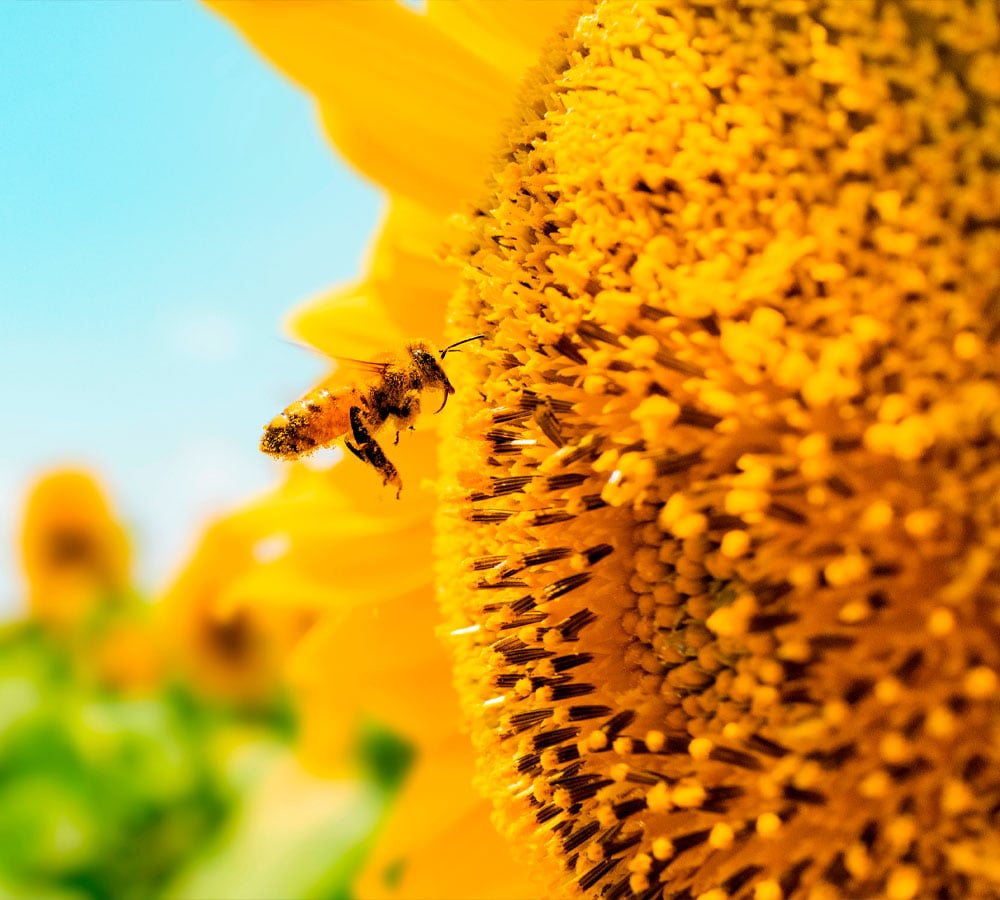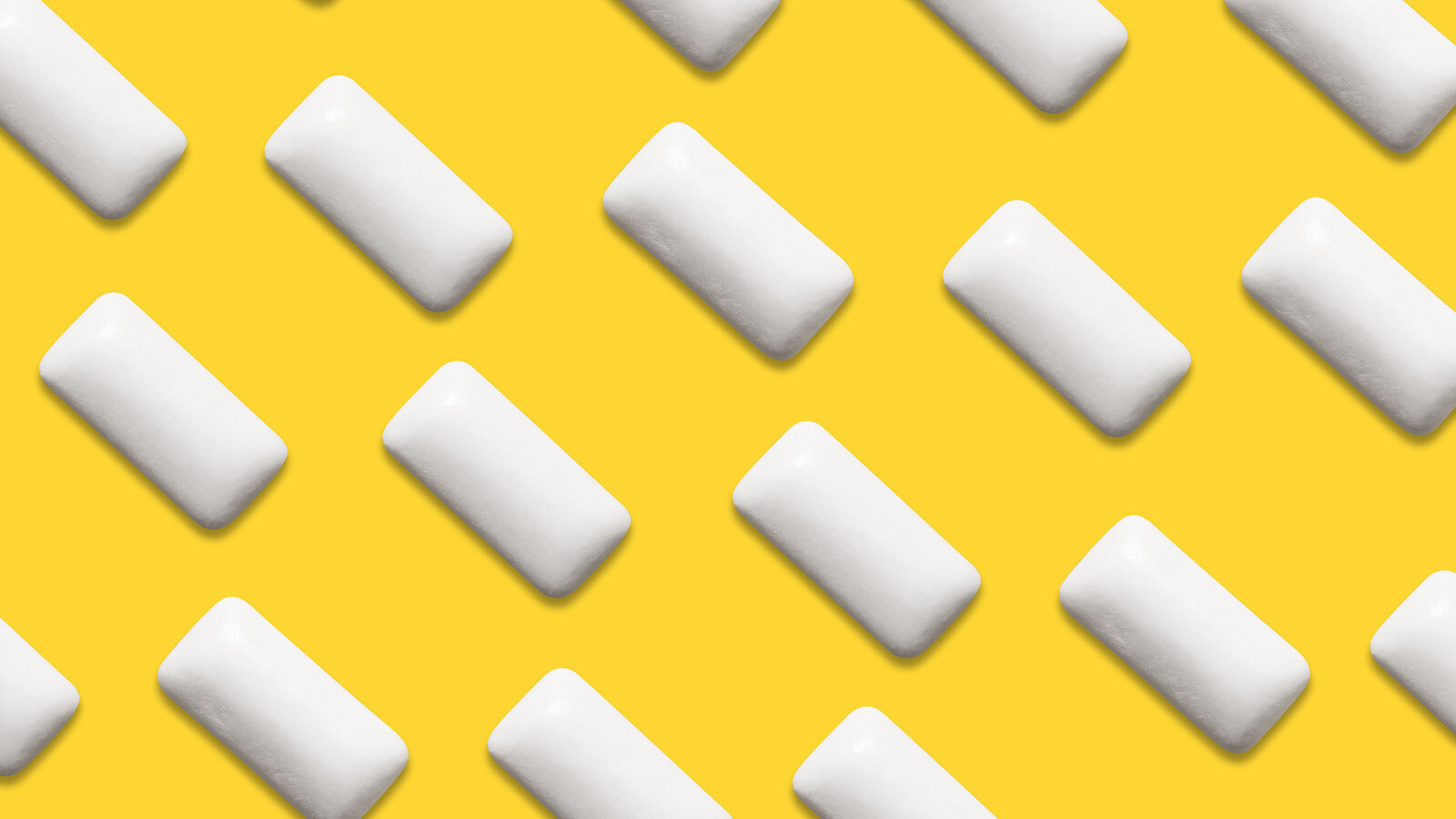Walking down a busy shopping street, you often see it: dark stains of gum on the ground. It remains a popular product - handy for fresh breath right before an appointment or on the road in public transport. But once the taste fades, the time comes to throw it away. It seems logical to dispose of it in the garbage, but is that the best option? Or are there more sustainable alternatives?
In this blog series, our Zero Waste Officer Milan takes on the challenge of office waste to discover innovative solutions for each waste stream. In this blog, he focuses on chewing gum. Are you reading along?
No more residual waste
During Zero Waste Week, we at Milgro said goodbye to the residual waste bin in the office. This immediately results in less residual waste because we are thinking more carefully about waste separation. But it also brings challenges to light. Where do you put items that are normally residual waste or that have no clear destination? With us they now end up in a display case, which encourages us to look for solutions together.
Chewing gum: its properties
In a container full of garbage, leftover chewing gum seems negligible. Yet in 2020, NL Clean estimated the amount of chewing gum sold at about 3.5 million kg. Of this, after use, or chewing, some 35% x 3.5 million kg = 1.2 million kg of residue remains. This ends up either in the residual waste bin or sometimes even on the street.
Chewed gum could be seen as food residue, but cannot be disposed of with organic waste. Milan explains exactly how this works:
In addition to sugar, chewing gum can be made of synthetic polymers such as polyethylene and plasticizers, among other things. These components make the gum stretchy and soft. So chewing gum is actually a plastic product; the gum is made from oil. Chewing gum is therefore also difficult to digest. It stays around 20 to 25 years. That's much longer than the average organic waste and therefore it can't go into the processing system. Waste management companies work with a set procedure of several weeks, and that period is not long enough for chewing gum to compost.

Alternative solutions
So chewing gum cannot go with organic waste. What can we do? Our Zero Waste Officer investigated environmentally friendly alternatives to chewing gum and what we can produce with the waste. Are you reading along?
Reuse for shoe soles
It turns out that chewing gum is very suitable as a material for producing a new type of rubber. A collaboration between an advertising agency, the specialized company Gum-Tec® and an Amsterdam fashion brand resulted in the Gumshoe. The Gumshoe is a shoe whose sole is made from chewed-out gum from the street.
Reuse for skateboard wheels
There are inspiring initiatives on reusing gum in skateboard wheels. Two students in France have worked out an imaginary project with Mentos and Vans. The idea is that passersby can stick their gum on a board. The chewed-out gum would be collected and mixed in factories and turned into skateboard wheels.
Zero Waste solutions
The above solutions deal with processing and reusing gum, but there are also options to avoid the waste stream of gum. Milan explains the following:
Solution 1: choose natural gum
There are different types of chewing gum. For example, there are companies, think BenBits, that sell biodegradable or natural gum. As a base, for example, instead of plastic from oil, a rubbery material is extracted from an appropriate tree. The idea is that this kind of chewing gum can be separated with organic waste, though.
Solution 2: other procurement
An alternative advice for preventing waste is to simply replace chewing gum with peppermint. It is also refreshing and can be eaten completely.
Idea or solution? We'd love to hear it
Returning to the question of whether chewing gum unnecessarily ends up in residual waste, we can confirm that this is not the case. Because chewing gum consists mainly of synthetic materials, it cannot be processed. Therefore, the best processing route is residual waste.
To reduce the environmental impact of chewing gum, it is first important to ensure that chewing gum no longer ends up on the streets. In addition, there are other alternative, including peppermint, which has the same refreshing effect and can be eaten completely.

Ask Our Zero Waste Officer
Are you unsure whether certain items in your office are unnecessarily ending up in residual waste? Milan is happy to help. Send your question to marketing@milgro.nl, and we’ll get back to you with a solution for your waste stream.
Stay Updated
Want to stay informed about all the latest developments? Follow us on LinkedIn and Instagram or subscribe to our nieuwsbrief. Curious about what Milgro can do for your business operations and waste management process? Get in contact with us.












